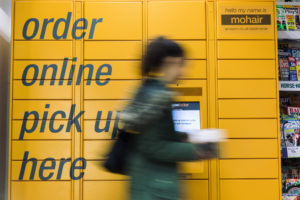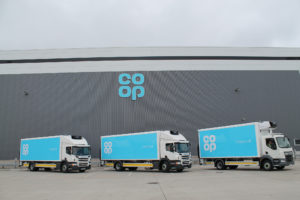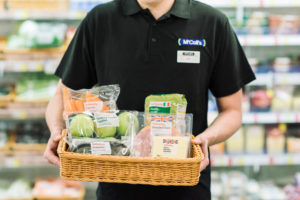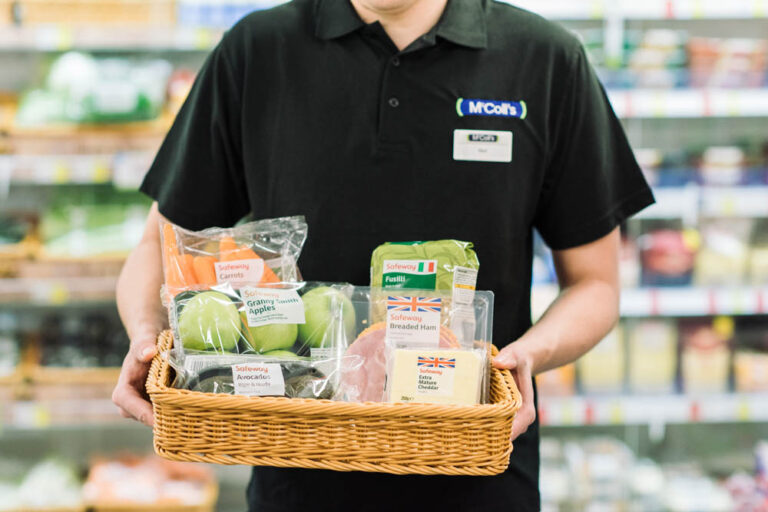The growth of convenience retail makes it a tantalising market. But the competition is tough and it’s inspiring a re-think of replenishment logistics. Johanna Parsons investigates…
The UK convenience retail market is set to grow to £48.2 billion by 2024, according to forecasts by IGD, and the competition to take a bite of that market is fierce. With the decline of the “weekly shop” and the plethora of new convenience stores, it may well seem that the convenience format is taking over. It is certainly producing innovative retail offerings and is reaping the rewards. But that doesn’t mean convenience is easy. The logistics processes that power convenience stores face big challenges.
There is no reward without risk. Recent years have seen a degree of upheaval in the market, with Co-op’s takeover of Nisa Retail, Tesco’s takeover of Booker, the C&C purchase of Conviviality’s wholesale business, and the closure of Palmer & Harvey which, for example, caused some £13 million worth of supply chain disruption to convenience retailer McColl’s.
The case of McColls underlines the significance of the supply lines to the storefront, which is something Andy Perry, Co-op supply chain and logistics director knows all about. “The efficiency and effectiveness of a physical logistics operation can be the difference between making a profit or not” he says.
To that end Co-op is investing heavily in its logistics infrastructure. “Last August we launched a £6 million facility in Inverness to serve our extensive store network and facilitate further expansion across the North of Scotland. We’ve also agreed terms for a new £45 million depot to be located off the A1 in Bedfordshire which we expect to open in early 2022.”
This 661,000 sq ft regional distribution centre will have frozen, chilled and ambient storage to support the Co-op’s ambitions for continued growth across London, the South and South East. Perry says the new site will form part of an integrated review and rebalancing of volumes across the Co-op network, and that it will provide greater scale, reduce road miles and supply chain costs.
More than just stem milage

It is significant that reducing road miles is just one of the considerations. Traditionally the logistics value of a location was determined by its proximity to key areas and the wasted or “stem mileage” in between. But Perry says that the deciding factors have become more complex, and stem mileage modelling is decreasing in importance.
“Many retailers are looking at more than just stem mileage, due to the huge range in the costs of land, rent and rates by area. Along with that, labour availability and labour costs are also a huge factor. Utilising height to reduce sq ft requirements, automation, robotics, mechanisation, understanding store drop densities and vehicle utilisation factors are also now a key part of that modelling. And determining the optimal delivery model, from volume forecasting and delivery frequency (both inbound from suppliers and out to stores), stockholding and cash flow planning are all elements that determine the sweet spot before deciding on location.
“It’s complex and nowhere more so than in convenience,” says Perry.
Jim Heartshorne, managing director at DHL Supply Chain, explains why priorities for DC locations have shifted. “Changing consumer habits have not just affected how retailers use their store space, but also the warehousing locations and configurations they now have to use,” he says.
“Hub and spoke warehousing, where stock is held in a central warehouse hub, and smaller spokes located close to where people live is an effective model to enable retailers to satisfy time-sensitive demands.”
As Heartshorne mentions, this is a consequence of demographic changes. And Wayne Snyder VP industry retail strategy EMEA at software firm JDA, agrees. “This shift has happened as a result of the urbanisation effect caused by younger generations moving back into city centres in recent years,” he says.
“These people prefer to buy when needed rather than plan ahead, are often short on fridge space and are less likely to own cars. Many of them are developing a taste for having some of the food preparation work done by the likes of Halo Fresh, or just want the likes of Deliveroo or Just Eat to provide food on the spot. All these factors are adding up to an erosion of the traditional ‘weekly food shop’ routine, spurring growth in the convenience market,” says Snyder.
The consensus is that the main driving forces for convenience store growth have been the focus on fresh foods and food-to-go options, as well as catering for a broad range of shopping visits.
Convenience means complexity

Perry elaborates on the wide range of shopping missions that stores like Co-op anticipate. “There are many factors influencing what was the ‘traditional convenience’ model – ranging from online and e-commerce, delivered convenience, to the ‘food for now’ type models be it ‘food on the go’ or ‘food for tonight’. The anchor is all in the word convenience and this can have a different meaning for different customers, and even a different meaning for the same customers but at different times of the day!”
This complexity is a key to the growth of the sector. Senior business analyst at IGD Patrick Mitchell-Fox says that convenience retail growth “is being led by the co-operatives segment above all, driven not only by a focus on opening new stores, but also by outstanding like-for-like performance underpinned by strong private label development, better fresh and chilled ranges and more competitive value”.
James Bielby, chief executive of the Federation of Wholesale Distributors, has a similar take on the complexity of convenience offerings. “The traditional local shop model has to adapt to offer both self-cook and professionally-prepared options which can be ordered online and delivered, browsed in the store and taken home, or even consumed on the premises. We should expect to see further diversification in offer depending on the location of stores and the communities they serve.”
Bielby also cites e-commerce as an important stimulus, especially as more parcel deliveries are now facilitated by convenience stores. “The whole premise of last-mile retail is changing, partly due to the influence of new competitors such as Amazon, but also because of consumers’ new expectations of how and where they buy their food and drinks.”
Chris Noice, head of communications and research at the Association of Convenience Stores, also sees the e-commerce synergy as key. “We see click and collect and other interactions with online retail as very important for the future of the convenience sector. There are over 46,000 stores in the sector, helping to solve the last mile problem for online retailers,” he says.
Perry is certain that online retailing will become a larger part of the convenience store of the future. “Putting it simply, it’s what many customers want and need,” he says.
“Click & collect will be one of those ‘online and convenient’ options more and more customers expect to have available to them. Collecting a parcel alongside a bottle of wine for that evening’s meal, or at the same time as food for the next few days can be transformational for busy shoppers. The online convenience market is already growing at pace and we expect that growth to continue, particularly in urban areas,” says Perry.
Click & Collect is Convenient?
Such adaptation and diversification may well delight the customer, but they are also a pain for suppliers. Bielby says “For the wholesaler, meeting the customer’s needs requires the flexibility to deliver the appropriate product mix for each individual business, from pure grocery at one extreme to traditional eat-in foodservice at the other.”
 Flexibility is not just needed for more elaborate offerings, but also for the core requirement to keep the shelves stocked. This is a particular problem for convenience stores, which unlike traditional supermarkets do not have huge stockrooms to act as buffers. This means a constant battle between potential stock-outs and waste.
Flexibility is not just needed for more elaborate offerings, but also for the core requirement to keep the shelves stocked. This is a particular problem for convenience stores, which unlike traditional supermarkets do not have huge stockrooms to act as buffers. This means a constant battle between potential stock-outs and waste.
Noice says that the chief weapon for independent convenience stores is their agility when it comes to where they source products. “Even stores that typically get all of their products delivered have access to local wholesalers. However, for many independent retailers, there is very little to no additional capacity to stock additional product so a lack of availability further up the supply chain leaves the convenience sector more exposed than larger retailers,” says Noice.
“Maintaining great availability is one of the biggest challenges in the convenience sector,” agrees Perry. “Our stores are smaller by nature, both in terms of shelf capacities and back room space. We can also be at greater risk of waste on fresh food with the volume of sale on short life products being very volatile when you look at individual store levels.”
JDA’s Snyder says this has led to sophisticated tactics, specifically using visibility. “To be a successful convenience retailer, you need great visibility right the way along the supply chain. Having shipments of highly perishable products delayed in transit, or leaving popular items out of stock in stores, will inevitably spell problems in a format that requires as much precision as possible. Convenience retailers are increasingly focussing on creating one consistent end-to-end view, covering everything from stores to distribution centres and the shipments that are made in between, so they can run as tight a ship as possible.”
And he says this is changing replenishment plans. “With all these moving parts to consider, we’re seeing retailers making increasingly complex decisions with their warehouse management systems, from shifting stock from one warehouse to another to meet anticipated future demand, to shipping all orders from a different distribution centre that is becoming overstocked,” says Snyder.
Balancing stock levels
Perry describes the Co-op strategy: “Our own model is one where we aim to provide a great fresh food offer and that’s why we deliver more frequently to our stores across this category than on say our ambient categories. It’s also on a much shorter order lead time, from sale of a product to replenishment of that same product. This allows us to react as quickly as we can to ensure we give customers what they want, when they want it, but also allows us to manage stock levels and avoid waste,” says Perry.
Heartshorne agrees that in the challenge to balance stock levels the stakes are higher for convenience stores. “Convenience retail has a unique set of needs, so traditional logistics models need to adapt to reflect these as the sector continues to growth,” he says. “For example, smaller stores, with little back-room storage, require regular replenishment with small yet frequent deliveries.”
He explains some of the strategies DHL Supply Chain typically uses for convenience clients: “We work with convenience retailers to spread their deliveries across a 24hour period, so they have the right volume and variety of products around the clock, from the early morning work commute to the late-night dinner dash.
 “Smaller convenience stores tend to be situated in built-up areas where people work, or in residential areas near customers’ homes so convenience retailers should be looking for a transport network running clean, quiet vehicles. As well as the public impact of delivering to these locations there are often more restrictions and increased costs. Out of hours or night-time deliveries can reduce costs while also ensuring stores are not distracted from delivering on their customer promise…
“Smaller convenience stores tend to be situated in built-up areas where people work, or in residential areas near customers’ homes so convenience retailers should be looking for a transport network running clean, quiet vehicles. As well as the public impact of delivering to these locations there are often more restrictions and increased costs. Out of hours or night-time deliveries can reduce costs while also ensuring stores are not distracted from delivering on their customer promise…
“Multi-temperature vehicles provide the opportunity to transport a range of goods in one journey, meaning that smaller volumes of different products can be replenished at the same time,” says Heartshorne.
Perry says that multi-temperature delivery is a crucial component of replenishing convenience stores, “they are absolutely key in a convenience model. Many stores have delivery restrictions and are in localities where naturally, we want to be a good neighbour, getting about our business as safely as possible. That’s what our customers and communities would expect from us.
“So, the ability to deliver multi-temperature and therefore have less vehicle movements generally is a key element in this. The level of sophistication that we now put into our forecasting and transport planning systems is unparalleled and it’s something that will only increase in the years ahead,” say Perry.
JDA’s Snyder agrees with Perry that retailers are honing more intricate approaches to visibility, with a focus on delivering a responsive supply chain. “Distribution centres also need to be able to react to unexpected demand and stock-outs… With recent advances in technology, retailers are starting to predict demand with increasing accuracy using AI (artificial intelligence) and ML (machine learning), evaluating not only a more precise outlook but also generating a forecast probability.”
Collaboration is convenient?
This emphasises the importance of treating the logistics operation as a core business function that when fully interconnected with the wider business IT systems can yield real payback. “Executing the operational plans within a cost base and achieving key service metrics will always be vital in a high volume/low margin food business. But being joined up with the business strategy and its mission, is how the collaborative end-to-end approach will allow a good logistics function to be a key enabler to the overall success of a business,” says Perry.
 Collaboration has been a hot topic for a long time, and contemporary IT infrastructures mean it is now working for real within firms such as Co-op. And we are closer than ever to what some might see as the holy grail of collaboration: between competitors.
Collaboration has been a hot topic for a long time, and contemporary IT infrastructures mean it is now working for real within firms such as Co-op. And we are closer than ever to what some might see as the holy grail of collaboration: between competitors.
DHL Supply Chain’s Heartshorne explains that 3PLs are in a unique position to be able to facilitate collaboration between retailers, in particular those with shared or nearby locations. “Collaboration of this kind has a positive impact on vehicle loads, as multiple smaller replenishments can be allocated to the same vehicle, improving fleet utilisation, driving down the cost of frequent deliveries while reducing the number of vehicles travelling in and out of urban areas,” he says.
So far so encouraging. But there’s another hot topic that is less positive, and somewhat more emotive: the business rates of tax applied to convenience stores.
“In 2018, some 7,500 stores closed around the UK, with further closures and job losses announced this year,” says Perry. “While many commentators point to changing consumer habits and new technology, business rates are a significant factor as they make it harder for shops to compete and grow. They’ve almost doubled in the past 20 years and as profit margins reduce, businesses are unable to invest and grow. This causes communities to stagnate rather than flourish. It also penalises those who most rely on shops – the elderly and those on lower incomes who need access to fresh, quality food.”
“We welcome the recent Treasury Select Committee’s report on business rates, which makes clear that the system is not working; that there is not a level playing field and that the government needs to carefully consider reform of the system.” In fact, Co-op Group CEO Steve Murrells has joined forces with outgoing Tesco chief executive Dave Lewis to raise awareness of this issue, says Perry.
“Business rates have a huge impact on the convenience sector,” agrees the ACS’s Noice, “especially for stores that host an ATM, for forecourt stores, and for convenience stores in urban locations. The impact that business rates have on a business focuses on that businesses’ ability to invest. At the moment, the system penalises those who are planning to invest in and improve their stores, which is something we would like to see changed.”
Business rates are not convenient
Snyder says it’s a massive concern for the retail sector in general. “Retail makes up five per cent of the economy yet ends up paying ten per cent of all business taxes and 25 per cent of business rates. For some large retailers, business rates can account for half their tax bill and have a significant impact on the viability of a store.”
From taxes to the bewildering complexity of customer demands, the pressures on convenience retailing are high. But with the IGD’s projected growth of £6.9 billion in the next five years, the innovative approaches to logistics – from distribution strategy to replenishment methods and IT connectivity – are clearly working.
![]() You can hear DHL’s Jim Heartshore speak at the Automation and Innovation Conference at Intralogistics 2020, which takes place at the Ricoh Arena on 31 March and 1 April. Register your interest now at www.intralogistex.co.uk
You can hear DHL’s Jim Heartshore speak at the Automation and Innovation Conference at Intralogistics 2020, which takes place at the Ricoh Arena on 31 March and 1 April. Register your interest now at www.intralogistex.co.uk







